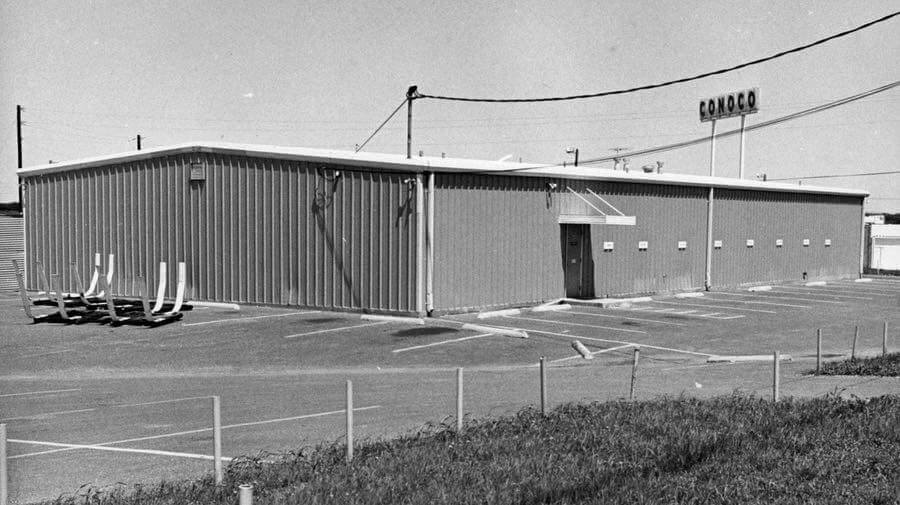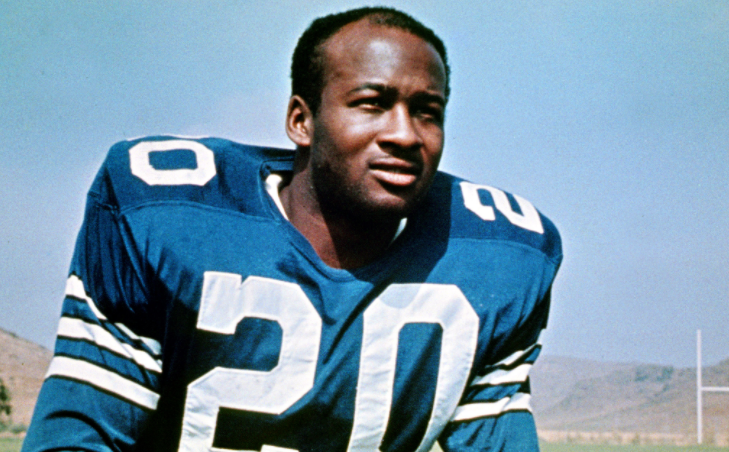
Doesn’t look like much, but the fieldhouse was part of a state-of-the-art facility on Forest Lane at Abrams. Photo provided by Dan Hamilton.
“Bullet Bob” Hayes was an Olympic sprinter who became a wide receiver for the Dallas Cowboys in the 1960s. He was a star. No one could catch the guy — they called him “The World’s

Bullet Bob Hayes said he and other black players had to live “umpteen trillion miles” from the Lake Highlands practice field.
Fastest Human.” Ring of Honor, Pro Football Hall of Fame, the only athlete — ever — to win both Olympic gold and a Super Bowl ring. But even as this superhuman flourished under coach Tom Landry and alongside quarterback Don Meredith, owning franchise records for receiving and touchdowns by the end of his 1965 rookie season, Hayes and several of his teammates were denied housing in the North Dallas and Lake Highlands area.
For no reason other than the color of their skin, Hayes, Mel Renfro, Rayfield Wright and other black players essentially were forced to live in South Dallas; as Hayes put it to author John R. McDermott, “after a game the white players head north and colored players head south … umpteen trillion miles from the practice field and from where everybody else is.”
When we decided to create a cover feature package in July filled with stories and tidbits surrounding the history of the Lake Highlands area, I knew one of the coolest points of interest would be the fact that the early Dallas Cowboys, from ’67 to ’85, enjoyed a state-of-the-art (in the beginning, anyway) practice facility at Forest Lane and Abrams. Many around here grew up with the team trotting around our neighborhood, literally. “The players led by Landry did long runs to Skillman and back on a dirt path. It was a constant sight,” recalls one longtime resident.

Mel Refro was the first Cowboy to file a fair housing lawsuit, which would pave the way for black players to live in North Dallas. Photo source: ESPN
When we dug in a little more, we learned more. There weren’t stories in the old newspapers or anything like that, but there were books that discussed the topic. One of the most famous tomes, loosely based on the Cowboys of that era, was called North Dallas Forty, by Peter Gent, a writer who briefly played on the team. The novel became a movie of the same name. It was highly exaggerated and over the top, but it touched on the black player housing issues.
Before his death, Gent told ESPN, “I was shocked that in mid-60s America, Dallas could have an NFL franchise and the black players could not live near the practice field in North Dallas, which was one of the reasons I titled the book ‘North Dallas Forty.’ I kept asking why the white players put up with their black teammates being forced to live in segregated south Dallas.”
According to McDermott’s Life magazine article, defensive back Mel Renfro in 1969 won a lawsuit against a builder and Realtor after he was rejected the day he and his wife showed up to sign a lease in the Lake Highlands area, near his team’s practice building. Things improved after that, according to Gent and other Cowboys historians. The local paper did not cover the lawsuit, or at least we could not find anything about it in the Dallas Morning News archives.





